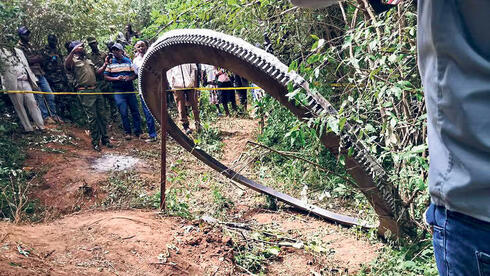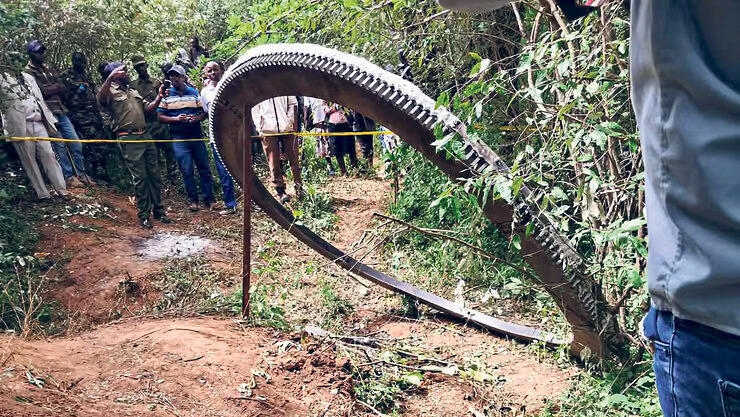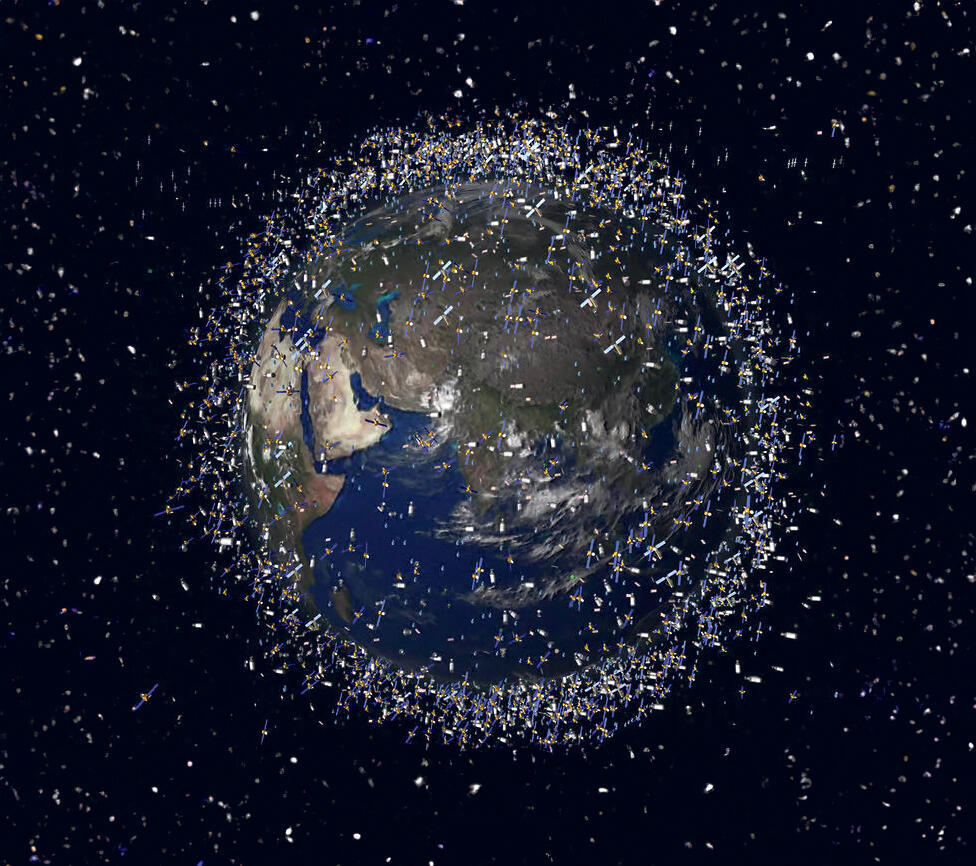
Earth’s orbit is turning into a junkyard, and the risks are rising
From falling debris to disrupted satellites, experts sound alarms over space pollution.
In late December, in a small village in Kenya, residents looked to the sky and witnessed a strange sight: a glowing red ring descending toward the ground. Moments later, a half-ton piece of metal crashed into a nearby bush, leaving them stunned. This was not an alien landing but, according to estimates, a piece of space debris that miraculously landed in an open area without harming anyone.
This was not an isolated incident. Last year, a large fragment from a Chinese space mission was seen falling over Southern California, a piece of space debris from the International Space Station struck a small building in Florida, and fragments of a SpaceX capsule were discovered on a Canadian farm. Although such cases are rare, experts warn that the increasing amount of space junk poses growing risks to both safety and space exploration. If left unchecked, the accumulation of debris could eventually block humanity’s path to space.
The growing problem of space debris
Space is an invaluable resource. Satellites and objects launched into orbit are used for communications, navigation, weather and climate monitoring, materials experimentation, and disaster management. However, once these objects become defunct, they are often left in orbit, contributing to the growing amount of space junk. This debris includes screws, paint flakes the size of sand grains, satellite fragments, metals, and even toxic materials released from spacecraft.
The European Space Agency (ESA) estimates that more than 40,000 objects larger than 10 centimeters and over 13 million smaller pieces, each less than a centimeter, are currently orbiting Earth. The total mass of man-made objects in Earth's orbit is approximately 13,000 tons, with about a third of it classified as debris. For instance, in June, the RESURS-P1 satellite broke apart in low Earth orbit (470 kilometers high), generating over 100 trackable debris fragments, as well as countless smaller pieces too tiny to monitor.
A mounting threat
Over 60 years of space activity have resulted in more than 56,450 objects being launched into orbit, but only 8% of these are active satellites. According to Professor Meir Ariel, head of the Center for Nanosatellites at Tel Aviv University, "Space debris consists of remnants of rockets and satellites that have become obsolete. These can remain in orbit for decades or even centuries, contaminating Earth's orbital environment."
While most space debris burns up upon re-entry into Earth's atmosphere, toxic byproducts, such as aluminum oxides, are produced in the process and can linger in the atmosphere indefinitely. "These substances are not immediately harmful but can have long-term environmental impacts," Ariel explains.
The accumulation of debris also increases the risk of collisions. Ariel highlights the exponential growth of space activity: "Four years ago, there were about 2,000 active satellites. Today, there are approximately 14,000, largely due to Elon Musk’s SpaceX, which launched 7,000 satellites this year alone. By the end of the decade, there may be 60,000 satellites in orbit. The chance of collisions increases exponentially, and each collision generates more debris, creating a chain reaction. Within a decade, space could become so polluted that leaving Earth will involve significant risks."
Speeding debris and weakened enforcement
Space debris moves at immense speeds, turning even tiny particles into potential hazards. "A grain of dust or paint residue traveling at such speeds can puncture spacecraft or satellites, disrupting their operations," Ariel notes. The U.S. Space Force monitors known debris and provides warnings about potential collisions. While large satellites can often maneuver to avoid debris, smaller satellites have limited capabilities.
Regulation and enforcement remain inadequate. In 2022, the U.S. Federal Communications Commission (FCC) imposed its first-ever fine for space debris—$150,000 against Dish Network for failing to properly decommission a satellite. This penalty, though symbolic, underscores the need for stronger enforcement mechanisms.
Potential solutions
Some progress is being made to address the issue. Rockets are increasingly directed to drop debris into the ocean during launch, and SpaceX has innovated reusable rockets, reducing the amount of waste. "SpaceX’s rockets are designed so that 90% of their mass lands back on the launch pad, making them reusable. This is a huge advantage compared to rockets that fall into the ocean and become debris," says Ariel.
Internationally, the 1967 Outer Space Treaty obligates nations to avoid harmful contamination of outer space, and the 2007 UN space debris mitigation guidelines provide a framework for reducing debris. However, implementation has been weak. "Space is treated like humanity's garbage can," Ariel concludes. "It belongs to no one, but ensuring its sustainability should be a shared global interest. Signing treaties is not enough—they must be enforced."















